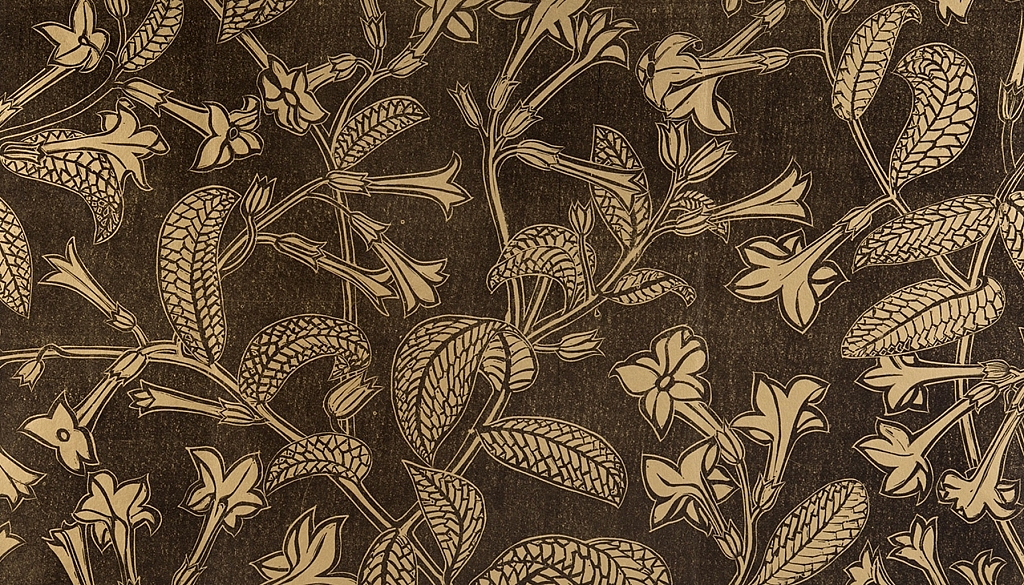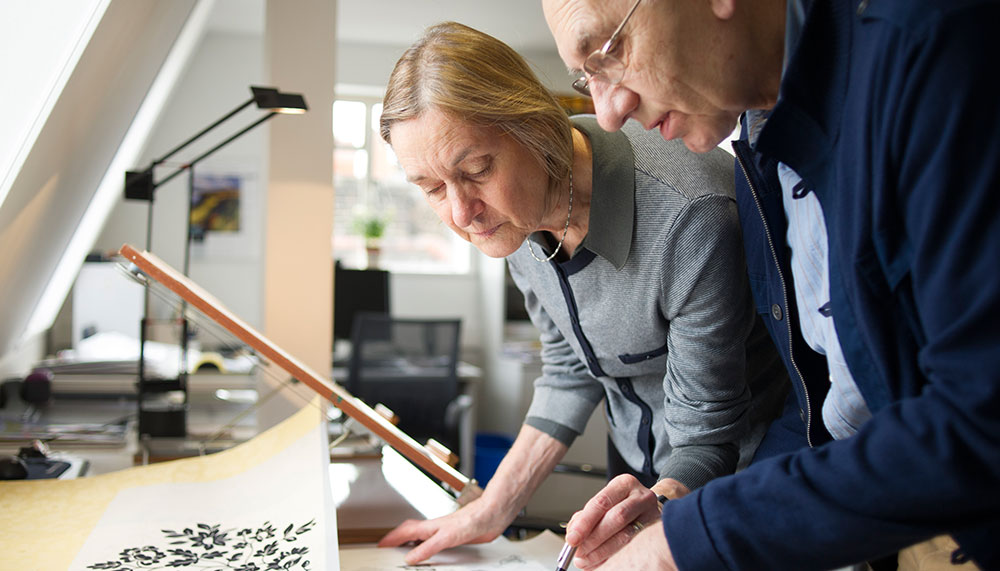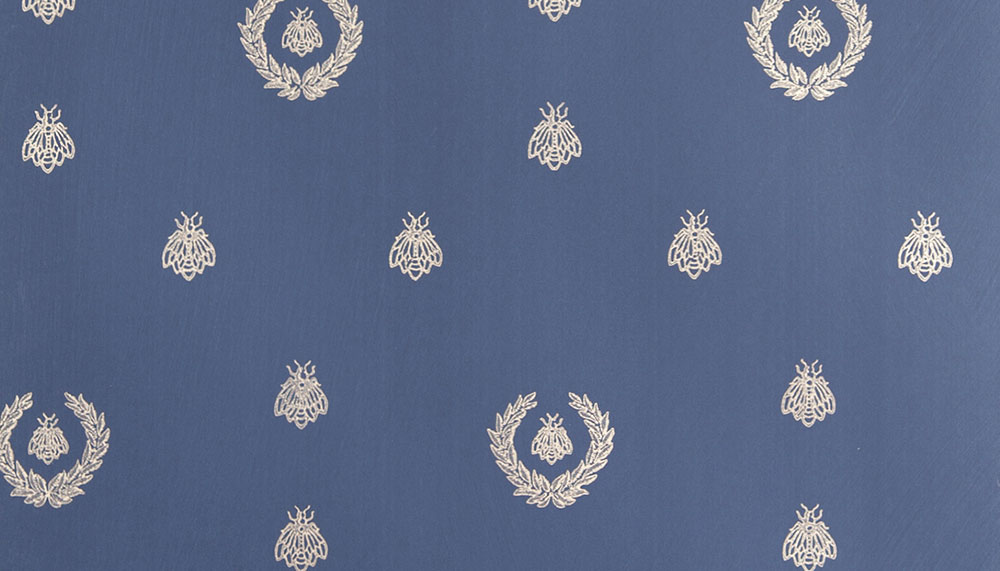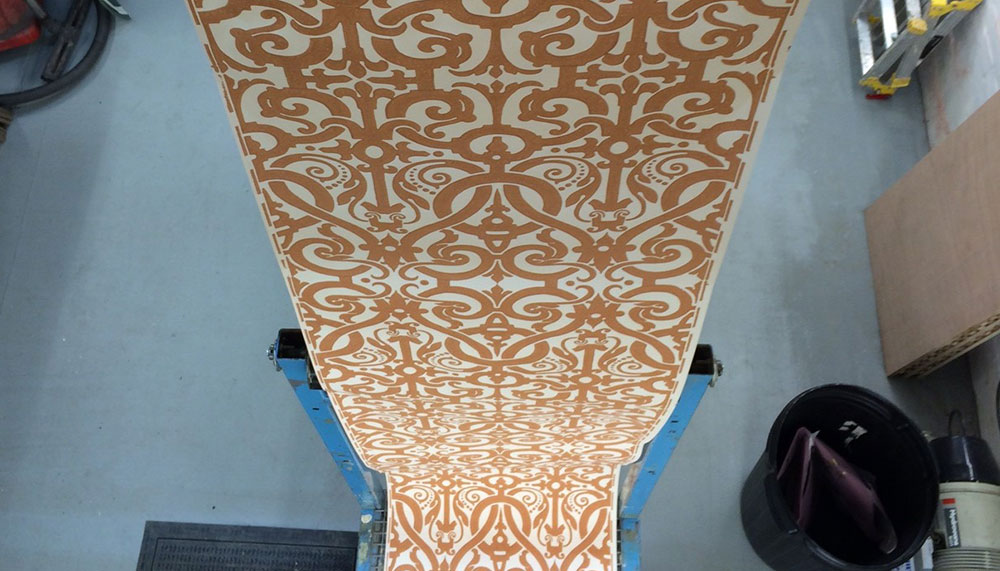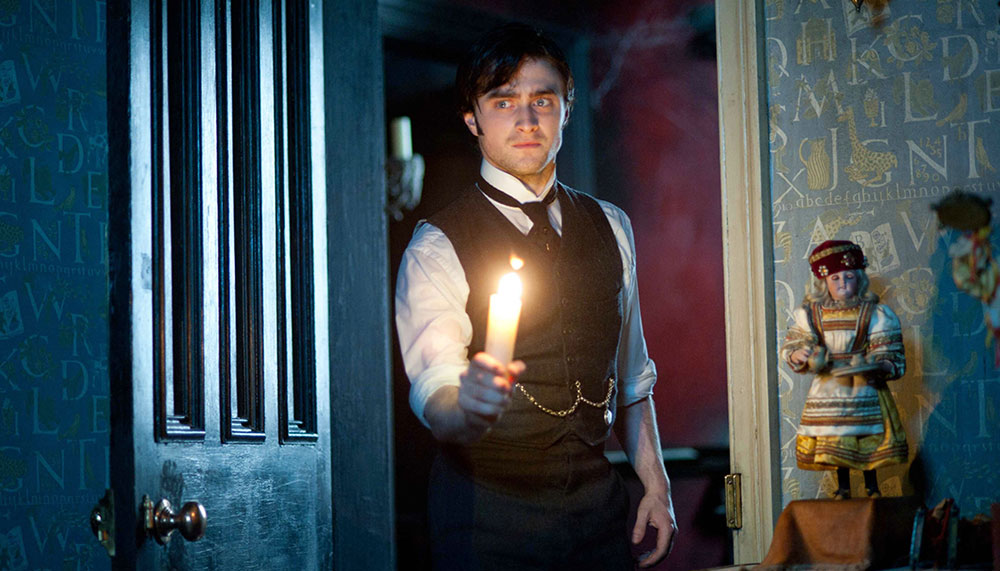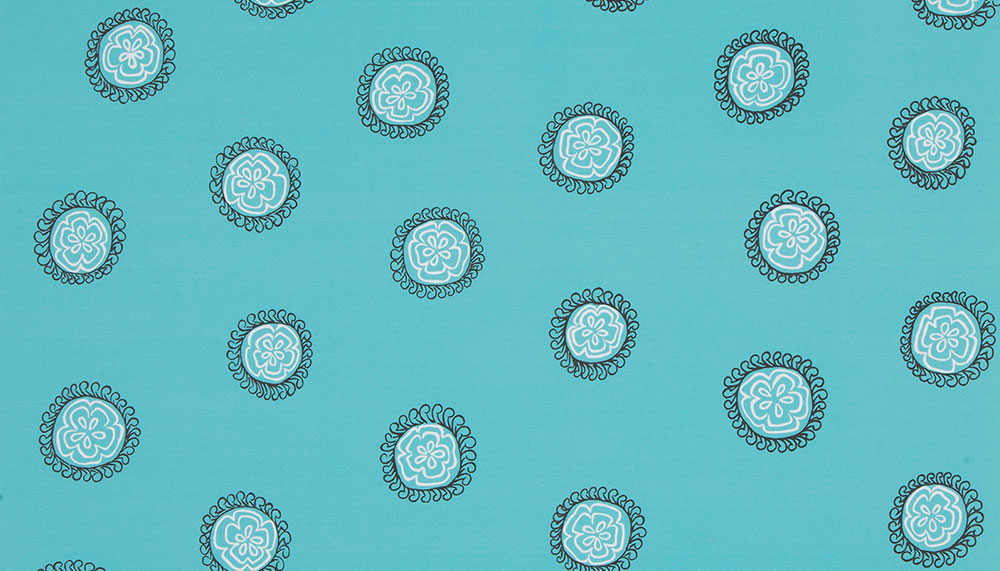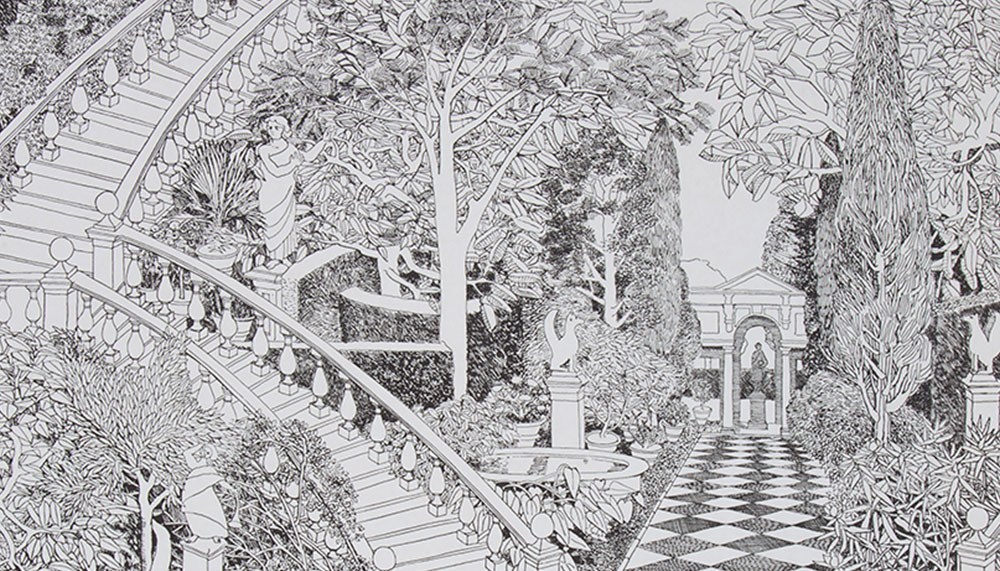Historic wallpapers by Hamilton Weston
Robert Weston laments for lost wallpapers. “It so often comes down to whoever finds them when a house is being refurbished – and so many houses are stripped right back now before decorating,” he says. “There’s basically a lack of education – I go around Georgian houses and see builders throwing away what they call ‘all this horrible 1950s stuff’. And I have to say, ‘sorry, that’s 1750s….’”
Be thankful then for the work of Robert Weston. He is one half of Hamilton Weston, London-based designer-makers of wallpapers both new and, its specialism, very old. Indeed, Weston and Georgina Hamilton are the go-to duo for anyone wanting historically accurate wallpapers. And that means really accurate: “I’m an historian and I like historical accuracy, even if I’m the only one who knows it,” Weston jokes. That a Georgian wallpaper might be mistaken for something 20th century speaks to the longevity of many historic designs, as does the sales of wallpapers than constitute historic designs updated by playing with colour and scale. But, all the same, Weston would rather they didn’t.
“Wallpapers now considered historic are often fantastic designs in their own right,” he notes. “Besides, there is a sense of accomplishment in getting it right, in not perpetuating wrong ideas. Go to a sale of any period things – steam engines or something like that – and there’s always an anorak who points out that something isn’t right. Not all of our clients are that knowledgeable – we try to enlighten them.”
Weston knows more than most about the subject. It is why people who buy period homes go to him for the right period papers, as, in fact, does the film industry. Recent projects have included ‘Sherlock Holmes’ and ‘Downton Abbey’, and providing a suitable nursery wallpaper – produced by hero of wallpaper design, 84-year-old Marthe Armitage – for ‘The Woman in Black’ play, or recreating a High Victorian gothic style for the 2013 Ralph Fiennes film about Charles Dickens, ‘The Invisible Woman’. The set designers had found a scrap of paper in an old house they were filming in and wanted it recreated. They turned to him.
Similar work restoring properties has seen him work with surviving fragments to recreate enough paper to replace and re-decorate entire rooms, sometimes incorporating the faded effects and patina of time if required for the project. For other jobs he has tracked down original designs in faraway museums using surviving photographic evidence. “It’s very much like detective work,” he says – and in more ways than one: when helping to restore Uppark House, a grand Georgian house in West Sussex, UK, he literally took to the walls with a magnifying glass in a bid to create a complete picture of the wallpapers once used there. “It’s a challenge,” he says, enthusiastically.
But then Weston’s expertise has pedigree – one that would impress even the likes of the Whitworth Art Gallery historic wallpaper collection in Manchester, or that of the Cooper-Hewitt Museum in New York, an indication perhaps how attempts to save these old works of domestic art may be on the up. It wasn’t the case back in the 1970s. Then Weston was working for the historic buildings department of the Greater London Council (GLC), measuring and recording buildings set to be demolished and, ripping through the detritus to get to timber frames, kept finding these old wallpapers.
“I ended up taking bags and bags of papers to the architects’ drawings store, which they hated,” he recalls. “Some of the papers might date to the 17th century and yet seemed incredibly modern. So we decided to get them reproduced – just when there was a boom for restoring houses in the historically-correct way, putting back in fireplaces and original features.”
And so when the GLC was disbanded in 1986, Weston, not knowing if the generally unarchived bags would survive, took a representative repeat of each and a business was born. The rest of the collected fragments did become the nucleus of English Heritage‘s wallpaper collection. Initially Hamilton Weston focused on making its historic papers – anything from the pre-Georgian period up until the early 20th century. Weston would meticulously hand-draw each design from the original document – this involving a separate drawing for each colour used – then carve a traditional printing block or creating a more contemporary screen with which to print. The somewhat laborious method was as old as some of his wallpapers – it was a process applied to small glued together paper sheets and was used since the 17th century, until it was generally superseded by mechanisation. Today digital printing is the norm – this makes the whole process that much faster although arguably less comprehensive: one can’t, for example, accurately recreate gold by digital printing, a yellow having to stand in its stead.
It was the hand-making of wallpaper that allowed the French in particular to use papers to imitate lush fabrics and even needlework during the 1600s, a move which gave wallpaper – until then a poor man’s alternative to hanging tapestries to help keep draughts out – greater acceptance among the well-to-do. Small wonder perhaps that Weston still has a longing for the old methods.
“When people choose wallpaper, when they’re going through a sample book, invariably they want to feel the paper, even though they won’t be touching it when it’s on their walls,” Weston notes. “And hand-made wallpaper just has a textural quality, in part because the print is ever so slightly raised on the paper. There’s a chalkiness to it. It’s the kind of thing a wallpaper connoisseur would appreciate, much as they might with a good fabric – others might just see the supposed flaws in what is, after all, a hand-made product. Unfortunately wallpaper manufacture is increasingly in the hands of accountants now and such processes are rare.”
Such things are likely to find only limited appeal in the too often unimaginatively decorated contemporary home, which, notes Weston, is now – “hurrah!” – gradually embracing colour and pattern. That is, at least, a step on from the idea of the ‘feature wall’, in which only one side or end of a room gets wallpapered. “I’m not such a fan of that,” he says, “because I like to sell a lot of wallpaper.”
